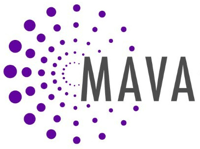This article originally appeared on www.mavanetwork.org and is featured here in partnership with the Minnesota Alliance for Volunteer Advancement.
![]()
A significant generational difference among volunteers lies in their preferred communication methods.
To address this, MAVA convened leaders in volunteer management to share invaluable insights on bridging this gap. Drawing from extensive experience, they
have developed strategies to improve interactions across age groups.
Here are tips from the MAVA workshop leaders on effective communication preferences across the generations.
Traditionalists
Traditionalists, also known as the Silent Generation, were born between 1928 and 1945.
This generation values loyalty, consistency, and a strong work ethic. When it comes to volunteer communications, Traditionalists generally prefer face-to-face interactions or phone calls, favoring personal touches over digital mediums. Handwritten notes and formal written communications are also highly appreciated, as they align well with their sense of formality and attention to detail.
Traditionalists' Communication Preferences
- Enjoy in person face to face communication.
- Like phone calls.
- Many like to receive written notices and mail communication.
- Some, but not all, use e-mail.
- Like handwritten thank you notes
Communication Expectations
- Some expect and like reminders others feel this is unnecessary.
- Do not expect immediate communication, but do expect follow through.
Baby Boomers
Baby Boomers, born between 1946 and 1964, are known for their strong work ethic, optimism, and dedication.
This generation witnessed significant social changes and technological advancements. In terms of communication, Boomers tend to appreciate direct and clear interactions, whether in person, over the phone, or via email.
While they are comfortable with digital communication, Boomers often prefer more structured and formal exchanges. Personal touches, such as thank-you notes or thoughtful follow-ups, are also valued, reflecting their appreciation for respect and courtesy.
Baby Boomers' Communication Preferences
- Email overall is a proffered method of communication, especially with the middle and later Boomers. However, not all Boomers use e-mail and the frequency of checking home e-mail varies.
- Most like e-newsletters. Some will say they don’t like to see paper wasted.
- Like phone calls. Most have cells, but still use “land line” for main form of phone. Most have answering machine and the majority seems to check for messages.
- Use of Facebook is growing. Some are active users but some that have Facebook accounts that are seldom used. Others see Facebook as a timewaster or for their kids. Like personal face to face conversation.
- Some text, but use it mostly for communication with children/grandchildren.
- Most use internet and will check your organization out on website before contacting.
- Like handwritten thank you notes.
Communication Expectations
- Expect response to communication, but do not expect it to be immediately
- Like clear, bulleted communication that is quick to read.
Generation X
Generation X, born between 1965 and 1980, is known for their independence, adaptability, and resourcefulness.
This generation grew up during a time of rapid technological and social change, including the rise of personal computers and the internet. When it comes to communication, Gen Xers value efficiency and directness. They are comfortable with both digital and face-to-face interactions, often preferring email and texting for their convenience and speed.
Gen X volunteers appreciate flexibility and autonomy in their roles. Personal recognition and meaningful feedback are important to them, reflecting their desire for respect and acknowledgment of their contributions.
Generation X's Communication Preferences
- E-mail is a preferred communication. Nearly all will have e-mail.
- Ask how they prefer to get communication. Many have multiple e-mail accounts with some used more than others.
- Most use Facebook.
- Many text, especially to communicate with family.
- Do not like to use abbreviations in e-mail and text as much as Millennials.
Communication Expectations
- Expect communication to be productive and concise.

Like this article?
Get more like it, plus access to exclusive reports, training, and networking events by joining MAVA's network of Volunteer Engagement Professionals.
Millennials
Millennials, born between 1981 and 1996, are known for their tech-savviness, collaboration, and social consciousness.
This generation grew up with the internet and the proliferation of social media. When it comes to communication, Millennials value transparency and responsiveness. They are highly comfortable with digital interactions, often preferring instant messaging and social media for their immediacy and ease of use.
Millennials volunteers appreciate flexibility and a sense of purpose in their roles. Personal recognition and meaningful feedback are crucial to them, reflecting their desire for impact and acknowledgment of their efforts.
Millennials' Communication Preferences
- Use text as regular communication.
- Most use e-mail
- Use abbreviations in text and e-mail communication.
- Most have smartphones
- Seldom leave voice mail messages or check voice mail.
- Most are on Facebook and Instagram
- Check websites and social media and use web as a number one source of information.
- Like personal face to face communication and feedback.
Communication Expectations
- Expect quick communication.
- Are often checking for text and e-mails and expect you to also
Generation Z
Gen Z, born between 1997 and 2012, are known for their digital fluency, entrepreneurial spirit, and strong advocacy for social issues.
This generation grew up with smartphones, high-speed internet, and the ubiquity of social media. When it comes to communication, Gen Z values authenticity and quick responses. They are deeply comfortable with digital interactions, often preferring instant messaging, social media platforms, and video calls for their immediacy and visual appeal.
Gen Z volunteers appreciate roles that offer flexibility and a clear sense of impact. Personal recognition and meaningful feedback are crucial to them, reflecting their desire for genuine acknowledgment of their contributions.
Gen Z's Communication Preferences
- Use text messaging as their primary form of communication.
- Frequently use e-mail for formal communication.
- Utilize emojis and GIFs in text and e-mail communication.
- Most have smartphones and are active on multiple apps.
- Rarely leave or check voice mail messages.
- Predominantly on platforms like Instagram, TikTok, and Snapchat.
- Regularly check websites and social media, using them as their main sources of information.
- Value personal face-to-face communication and real-time feedback.
Communication Expectations
- Expect instant communication and quick replies.
- Constantly check text messages and e-mails and expect you to do the same.
Understanding the diverse communication preferences of different generations is essential for fostering effective interactions and strengthening volunteer engagement.
By acknowledging these differences, organizations can tailor their volunteer communication strategies to better engage with each group, ensuring every message resonates and every interaction is valued.





